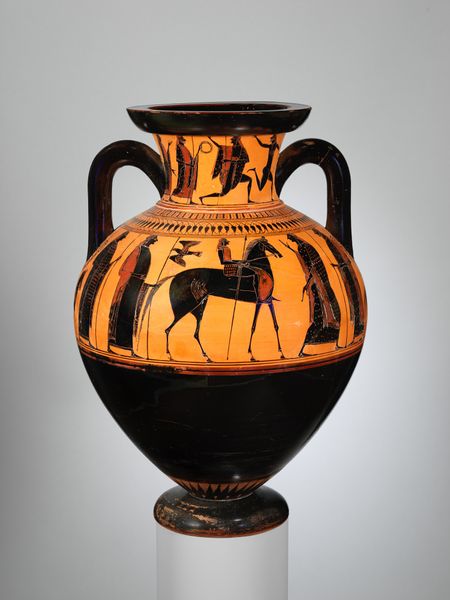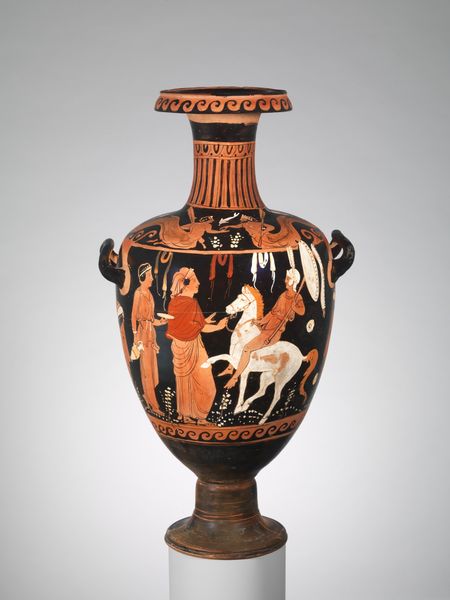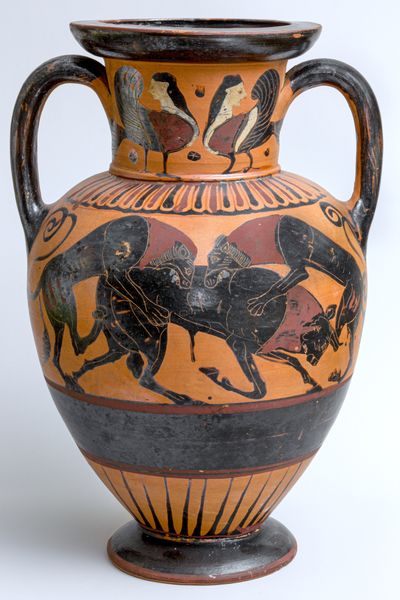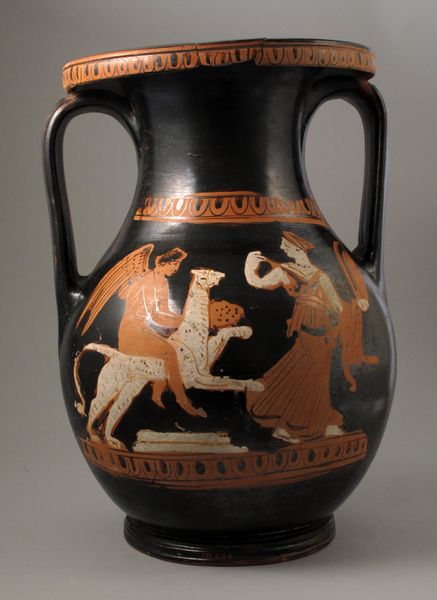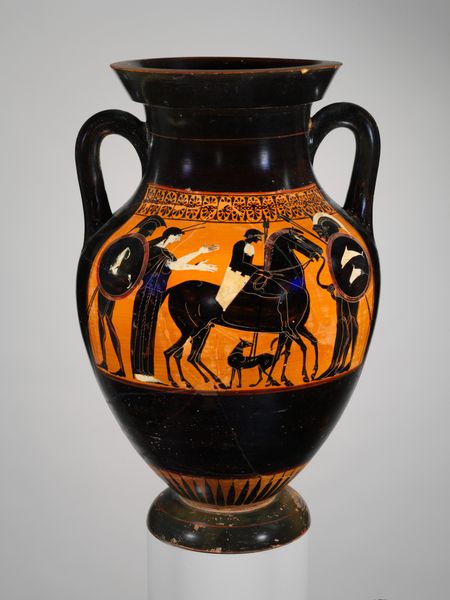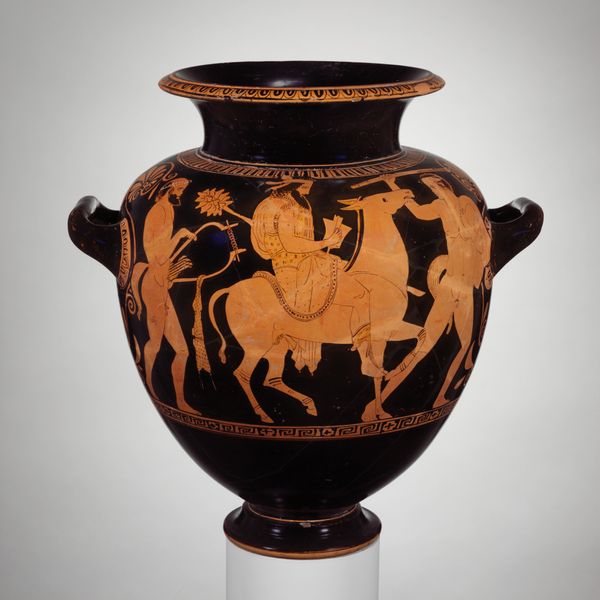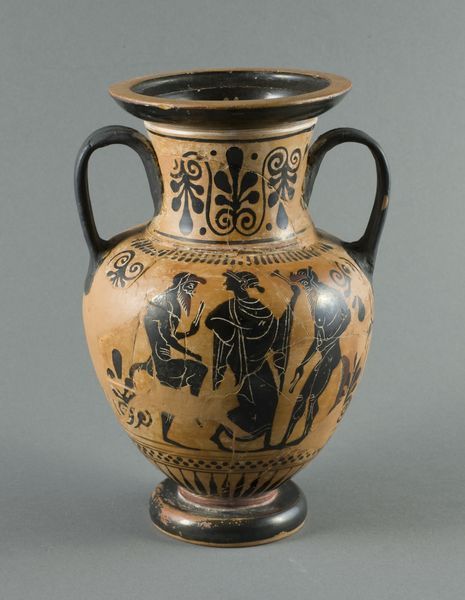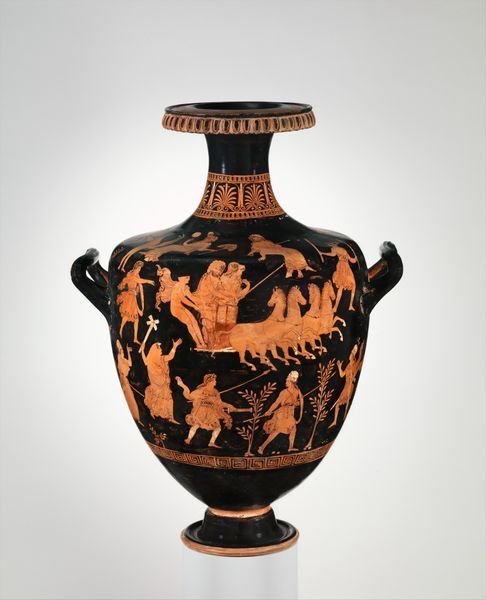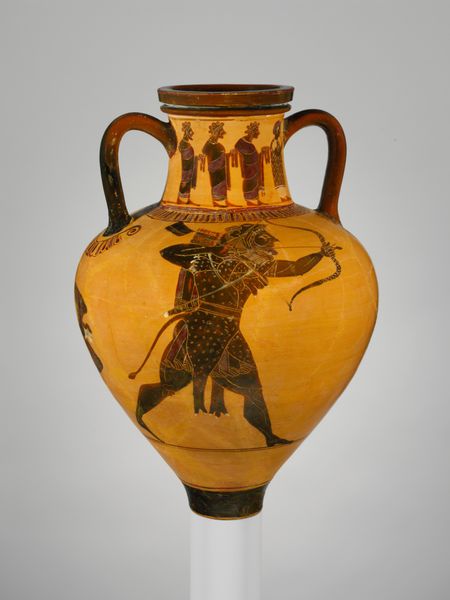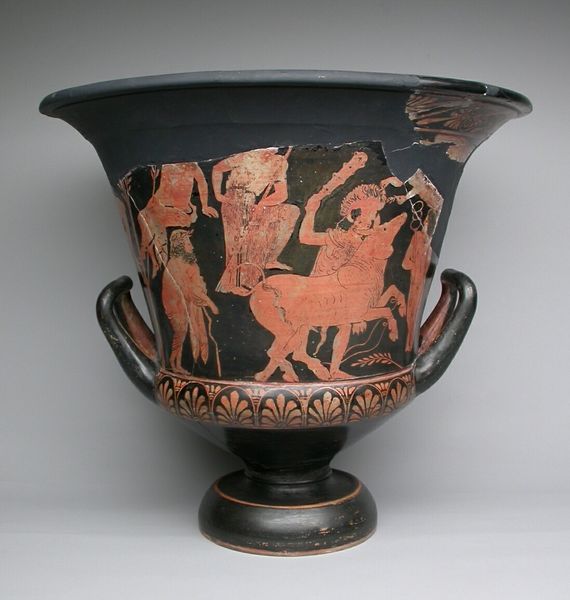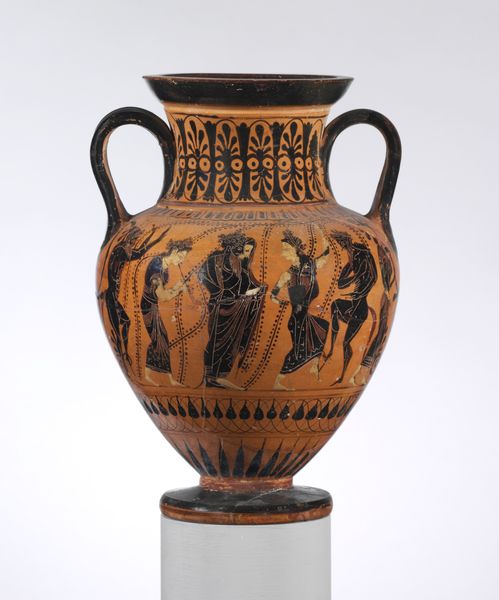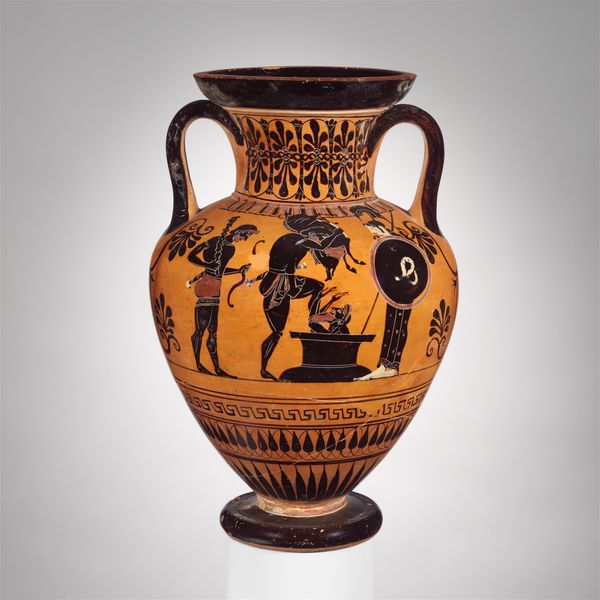
drawing, ceramic
#
drawing
#
narrative-art
#
greek-and-roman-art
#
ceramic
#
figuration
#
geometric
#
ancient-mediterranean
#
ceramic
Dimensions: 15 1/4 x 11 in. (38.74 x 27.94 cm)
Copyright: Public Domain
This black-figure neck amphora was made in ancient Greece, probably around the 6th century BC, using refined clay. The process began with carefully shaping the clay body on a potter's wheel, achieving that elegant profile. Once dried, the artist would have meticulously painted the figures using a slip made from the same clay, but altered to fire black in the kiln. Notice how the details are incised through the black, revealing the red clay beneath. This wasn't just decoration; it was a high-stakes technical feat. The firing process itself required precise control of the kiln atmosphere to achieve the desired contrast between the black figures and the red background. This wasn't just a pretty object; it was a carefully crafted product of its time, reflecting sophisticated ceramic practices. The amphora form itself tells a story about trade and commerce, as vessels like this one were used for transporting wine, oil, and other goods across the ancient world. By looking closely at how it was made, we can see the intimate connections between art, labor, and society.
